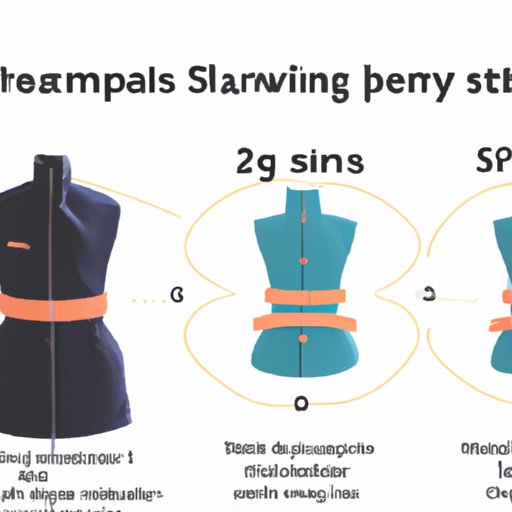Introduction
Steaming clothes is a great way to freshen them up and remove wrinkles, but the process can be tricky if you’re not sure what you’re doing. In this article, we’ll provide an overview of the benefits of steaming clothing, explain which items are suitable for steaming, and outline the steps you need to take in order to properly steam your clothes. We’ll also discuss different types of steamers available, offer advice on how to avoid common mistakes, and highlight some popular brands of steamers.
The Benefits of Steaming Clothing
There are many benefits to steaming clothing. It’s a quick and easy way to remove wrinkles and give clothes a fresh, crisp look. It also kills bacteria and dust mites, so it’s a great option for those with allergies or sensitive skin. Plus, it’s much gentler than ironing, so it won’t damage delicate fabrics. Steaming is also more efficient than ironing since you don’t have to keep stopping and starting to move the iron back and forth.
What Items Are Suitable for Steaming?
Most clothing items are suitable for steaming, including blouses, slacks, skirts, dresses, suits, coats, jackets, and even hats. However, there are some items that are not suitable for steaming, such as sequined garments, leather, and fur. It’s important to check the care label before steaming a garment to make sure it won’t be damaged by the heat.

Steps to Properly Steam Clothing
When steaming clothing, it’s important to follow the proper steps in order to ensure the best results. Here’s a step-by-step guide to help you get started:
- Hang the garment on a hanger and place it on the steamer.
- Turn the steamer on and allow it to heat up.
- Hold the steamer nozzle a few inches away from the fabric and move it slowly in an up and down motion.
- Be sure to steam all areas of the garment, including sleeves, collars, and hems.
- Once you’ve finished steaming, hang the garment up to cool.
Here are a few tips and tricks for optimizing your results when steaming clothing:
- Start with a clean garment to ensure the best results.
- Be sure to hold the steamer nozzle close enough to the fabric to produce steam, but not too close that it could scorch the fabric.
- For best results, steam one side of the garment and then turn it over and steam the other side.
- If you need to remove stubborn wrinkles, you can use the steamer to dampen the fabric and then press it with an iron.

Different Types of Steamers Available
There are several different types of steamers available on the market, including handheld steamers, garment steamers, and steam presses. Handheld steamers are small, portable devices that are ideal for spot-treating garments. Garment steamers are larger and feature a hose and nozzle for steaming entire garments. Steam presses are larger still and feature a heated plate that is used to press the fabric while steaming it.
It’s important to choose the right type of steamer for your needs. Handheld steamers are great for spot-treating garments, but they may not be powerful enough to steam large garments like coats and jackets. Garment steamers are more powerful and can handle larger items, but they may be too bulky for some users. Steam presses are the most powerful option, but they are also the most expensive and require the most setup time.
When choosing a steamer, it’s important to consider factors such as size, power, and price. Popular brands of steamers include Rowenta, Philips, and Conair. Be sure to read reviews and compare features before making your purchase.
Conclusion
Steaming clothing is a great way to freshen up and remove wrinkles from garments. It’s faster and gentler than ironing, and it also helps to kill bacteria and dust mites. When steaming clothing, it’s important to follow the proper steps and use the right type of steamer. Be sure to choose a steamer that is the right size and power for your needs, and read reviews before making your purchase.
By following these tips, you’ll be sure to get the best results when steaming your clothing.


